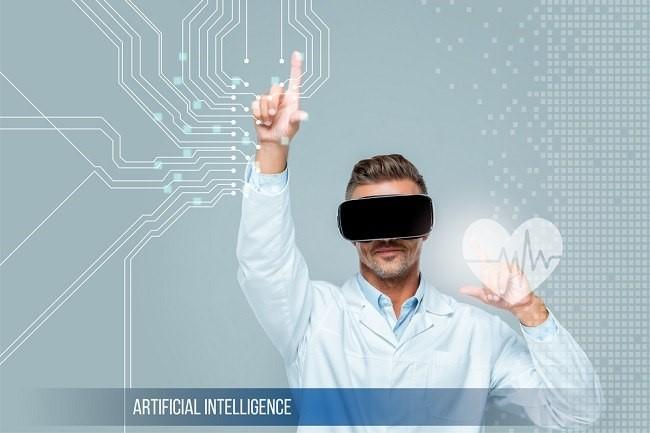
Artificial Intelligence in Cardiovascular Medicine
Artificial intelligence (AI) enables machines to learn from experience, adapt to new inputs and perform tasks like humans. Most of the examples of AI you hear today – from computers playing chess to cars driving themselves – rely heavily on deep learning and natural language processing. Using this technology, computers can be trained to complete certain tasks by processing large amounts of data and recognizing patterns in the data.
The Role of Artificial Intelligence in Cardiovascular Medicine
The role of artificial intelligence in the cardiovascular field currently has a very wide development potential, including predicting the prognosis and mortality outcomes of heart failure patients with normal ejection fractions, and predicting heart failure faster than clinicians alone.
Artificial intelligence (AI) is a branch of computer science aimed at "resembling" humans, both in terms of knowledge, learning capacity, and human way of thinking. Artificial intelligence has been widely researched and applied in medical practice in the last decade, for example for the diagnosis of cancer and diabetic retinopathy. This has led to a paradigm shift towards precision medicine.
In the near future, artificial intelligence techniques will play an increasingly vital role in the practice of precision cardiovascular medicine in many ways:
- Identify previously unknown risk factors
- Analysis of images / results of supporting examinations, both simple and currently used such as ECG, to analysis of more complex examinations such as results of echocardiography, CT scan, or MRI
- Changing diagnostic criteria
- Determine the choice of therapy decisions that are tailored to the patient.
Artificial Intelligence in Cardiovascular
Artificial intelligence has the potential to store large amounts of data and exploit it with exponential learning capabilities and high computing power (big data analysis). This allows computers to learn faster than humans, even making the best decision choices in certain situations, according to the algorithms they have learned from the large amounts of data.
This ability to analyze big data has a lot of potential in the cardiovascular field:
- Identify the genotype or phenotype of syndromes such as heart failure with normal ejection fraction (HFpEF), Takotsubo cardiomyopathy, and primary pulmonary hypertension so that individualized targeted therapies can be made.
- Supports clinical decision making, eg determining anticoagulation in non valvular atrial fibrillation
- Identification of unknown risk factors, eg . for Brugada syndrome and acute coronary syndrome
- Determine the cost-effectiveness of the examination or therapy provided
- Several aspects of artificial intelligence that have been developed in the cardiovascular field are machine learning, deep learning, and cognitive computing.
Deep Learning Applications in Cardiovascular Medicine
Artificial intelligence with deep learning was found to be able to predict end-systolic and end-diastolic volume through MRI, predict heart failure 9 months before the diagnosis was made by the clinician, and analyze electrocardiographic (ECG) waves to be normal, abnormal, and threatening. soul with an accuracy rate of 99%.
Cognitive Computing
Cognitive computing is a way for computers to "self-learn" using machine learning or deep learning, as well as pattern recognition, to mimic human thought processes. It aims to create an algorithm model to solve problems without human assistance, for example IBM Watson. IBM Watson is a type of cognitive computing that "learns" continuously from various datasets (eg electronic medical records) to predict various outcomes more accurately than humans [1,2].
Cognitive Computing Applications in Cardiovascular Medicine
The 2016 publication covered 50 patients using a cognitive computational artificial intelligence approach to differentiate constrictive pericarditis from restrictive cardiomyopathy using data on 15 variables from 3D-STE (3D speckle-tracking echocardiography) and 4 variables from echocardiography. The results show that the use of artificial intelligence can accurately diagnose constrictive pericarditis from restrictive cardiomyopathy, so it is considered to have the potential to help interpret cardiac imaging, especially for novice medical personnel with limited experience.
The above study is still a pilot study with 50 patient samples so it requires further research, especially to compare it with the gold standard for the diagnosis of constrictive pericarditis. However, this study demonstrates the potential of using artificial intelligence to help doctors make more accurate diagnoses.
Application of AI in Cardiovascular Sector in Asia Pacific
In Asia Pacific, which has a high prevalence of cardiovascular disease with limited cardiologists and health facilities, the use of AI can help better risk stratification. Health services in remote areas can also be provided without the need for many specialists. However, there are limitations due to incomplete medical data due to low follow-up rates and the lack of coordination in recording medical records within and between institutions.
Why is artificial intelligence important?
AI automates repetitive learning and discovery through data. But AI is different from hardware-driven robotic automation. Instead of automating manual tasks, AI performs frequent, high-volume, computerized tasks reliably and without fatigue. For this type of automation, human investigation is still important to set up the system and ask the right questions.
AI adds intelligence to existing products. In most cases, AI is not sold as an individual app. However, the products you already use will be enhanced with AI capabilities, much like Siri is being added as a feature in a new generation of Apple products. Automation, conversational platforms, bots, and smart machines can combine with vast amounts of data to leverage many technologies at home and at work, from security intelligence to investment analytics.
AI adapts through progressive learning algorithms to enable data to program. AI finds structure and order in data so that algorithms acquire skills: Algorithms become classifiers or predictors. So, just as an algorithm can teach itself how to play chess, it can teach itself what product to recommend next online. And models adapt as they provide new data. Back propagation is an AI technique that allows the model to adapt, through training and added data, when the first answer isn't quite right.
AI analyzes data more and more deeply using neural networks that have many hidden layers. Building a fraud detection system with five hidden layers was almost impossible a few years ago. Everything is changing with the incredible power of computers and big data. You need a lot of data to train deep learning models because they learn directly from the data. The more data you feed to the model, the more accurate the model will be.
AI achieves amazing accuracy through deep neural networks – which was previously impossible. For example, your interactions with Alexa, Google Search, and Google Photos are all based on deep learning – and they just keep getting more and more accurate as we use them more and more. In the medical field, AI techniques from deep learning, image classification, and object recognition can now be used to find cancer on MRI with the same accuracy as trained radiologists.
AI makes use of most of the data. If the algorithm is self-learning, the data itself can become intellectual property. The answer is in the data; You just need to apply AI to get it. As the role of data is more important than ever, data can create a competitive advantage. If you have the best data in a competitive industry, even if someone applies a similar technique, the best data will win.
Conclusion
AI will play a bigger role in medicine, including in cardiovascular medicine. AI will help doctors to determine diagnoses and tailored therapy options for patients. Examples of the role of artificial intelligence that continues to be developed in the cardiovascular field are to predict survival of HFpEF patients, predict end-systolic and end-diastolic volume via MRI, predict heart failure early, analyze ECG waves, and differentiate constrictive pericarditis from restrictive cardiomyopathy through echocardiography.



